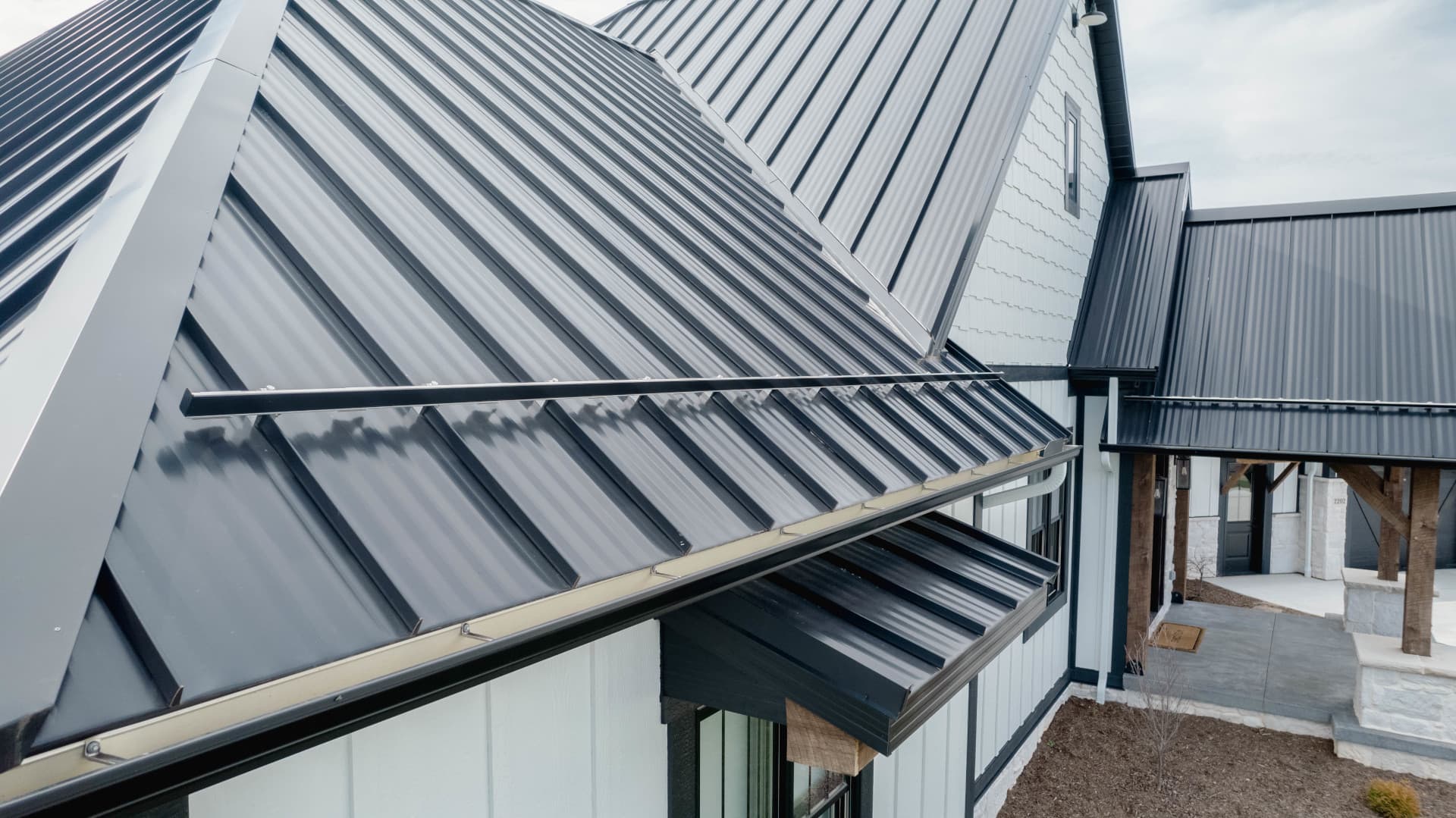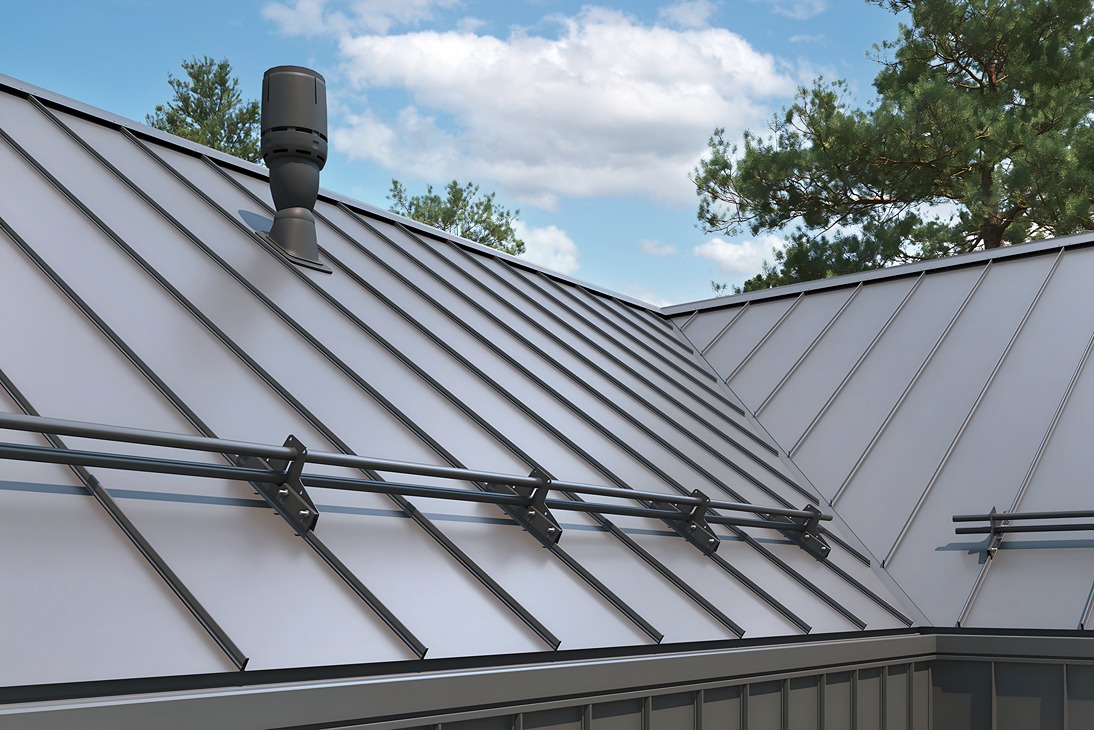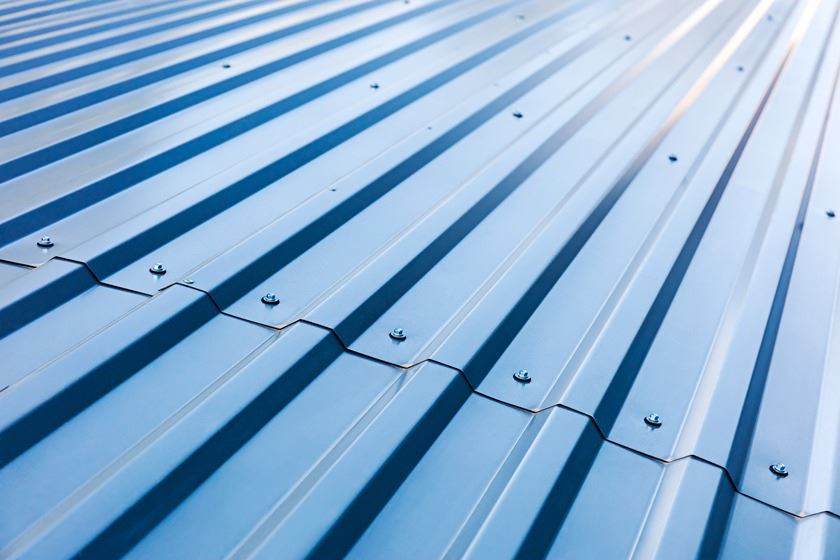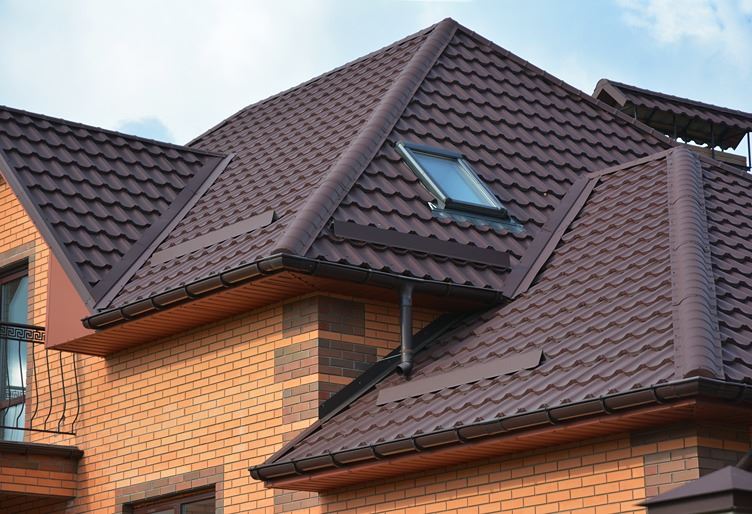If you’re thinking about upgrading your roof, metal roofing might be just what you need. It’s sleek, tough, and built to last - qualities every homeowner dreams about. A well-installed metal roof can last 50 years. That’s right - 50 years.
But of course, like any big home improvement decision, it’s important to weigh the pros and cons. Is metal roofing worth the much higher upfront cost? How noisy is it during a Texas thunderstorm?
At Southwest Exteriors we don’t sell metal roofing, but we believe in helping homeowners like you make educated decisions. That’s why, in this complete guide, we’ll break down everything you need to know about metal roofing - from its benefits and styles to installation tips and potential drawbacks.
By the end, you’ll have a clearer idea if metal roofing is right for you standards, style, and budget.
What Is Metal Roofing?

Simply put, metal roofing is a roofing system made from metal panels or tiles. It’s commonly made from materials like steel, aluminum, copper, or zinc.
- Steel: The most popular choice due to its strength, affordability, and versatility. Usually coated with a layer of zinc or aluminum to prevent rusting.
- Aluminum: Lightweight, rust-resistant, and ideal for coastal areas where saltwater corrosion is a concern.
- Copper: Known for its natural beauty and longevity. It develops a charming patina over time, making it a favorite for homeowners seeking a classic or historic look.
- Zinc: The eco-friendly option. It’s highly durable, corrosion-resistant, and completely recyclable, with a lifespan that can stretch over a century.
Metal roofing also comes in various styles to suit your aesthetic goals. You can go for the sleek, modern look of standing seam panels or opt for metal shingles that mimic the appearance of slate.
Although metal roofing fits perfectly into the modern home aesthetic, its benefits go far beyond looks. Unlike traditional shingles that can crack, warp, or deteriorate under the hot Texas sun, metal roofing stands strong against high winds, rain, hail, and even fire.
So let’s dig into why metal roofing is becoming more and more popular - starting with its long list of benefits.
Benefits of Metal Roofing
Durability and Longevity
If you don’t want to replace your roof every 15 years (an especially common timeline in Texas, the hail capital of North America), metal roofing might be the solution. Where asphalt shingles might last 10 to 30 years (depending on quality), a properly installed metal roof can easily go for 50 years. Copper and zinc roofs can even stretch over a century with the right care.
Metal roofs are just very tough. They resist:
- Rust and Corrosion: Thanks to protective coatings like zinc (galvanized steel) or aluminum (galvalume steel), metal roofs can fend off rust even in humid or coastal environments.
- Extreme Weather: Whether it’s hail, high winds, heavy rain, or even fire, metal roofing offers superior protection. Many systems are designed to withstand winds up to 150 mph or higher.
Metal roofing lasts...and looks good doing it.
Energy Efficiency
Metal roofing is also good for your energy bills. Here’s how:
- Reflectivity: Metal naturally reflects more heat than traditional asphalt roofing. That means less heat transfer into your home, keeping it cooler during those sweltering Texas summers.
- Energy-Efficient Coatings: Many metal roofing systems come with special coatings that further enhance reflectivity and improve thermal performance. Cool roof coatings, for example, can reflect up to 90% of solar radiation.
Low Maintenance Requirements
Think a high-performance roof means high maintenance? Think again. Metal roofing requires less upkeep than most other roofing materials.
- Cleaning and Upkeep: Forget about replacing cracked shingles or worrying about algae and moss growth. Metal roofs resist mildew, rot, and insect damage. Occasional cleaning with a hose or gentle pressure wash is often all it takes to keep them looking fresh.
- Tips for Maintenance: To maximize your roof’s lifespan, inspect it once or twice a year for loose screws, dents, or debris buildup. Keeping gutters clean and trimming overhanging branches will also help maintain your roof’s pristine condition.
Versatility and Aesthetic Appeal
Gone are the days when metal roofs were limited to shiny silver panels on barns and warehouses. Today’s metal roofing offers incredible versatility in style, color, and finish.
- Variety of Styles: From sleek, modern standing seam panels to metal shingles designed to mimic slate or even clay tiles, there’s a look for everyone.
- Color and Finish Options: With hundreds of colors and finishes available, you can customize your roof to perfectly match your home’s aesthetic. Matte, glossy, textured—you name it.
- Architectural Flexibility: Whether you’re going for a rustic, classic, or ultra-modern look, metal roofing adapts beautifully to almost any architectural style.
Types of Metal Roofing Systems
Metal roofing isn’t a one-size-fits-all solution. It comes in a variety of styles and systems, each with its own unique benefits and ideal applications. Whether you’re looking for sleek, modern panels or something that mimics classic materials like slate or wood, metal roofing has an option for you. Let’s break down the most popular types.
Standing Seam Metal Roofs

Standing seam roofs are the poster child of modern metal roofing. They feature long, vertical panels connected by raised seams that run continuously from the roof’s ridge to the eaves.
Benefits:
- Sleek, Contemporary Look: The smooth, unbroken lines give your home a clean, minimalist aesthetic.
- Superior Weather Resistance: Raised seams help prevent water infiltration, making this style excellent for areas with heavy rain or snow.
- Longevity: With proper installation, a standing seam roof can last 50 years or more.
- Energy Efficiency: Compatible with cool roof coatings and solar panel installations.
Ideal Applications:
- Modern and contemporary homes looking for a streamlined appearance.
- Commercial buildings that prioritize durability and low maintenance.
- Homes in areas prone to harsh weather conditions.
Potential Drawbacks:
- Higher Cost: Standing seam roofs are generally more expensive than other metal roofing types.
- Complex Installation: Requires highly-skilled, professional installation due to its precise interlocking design.
Standing seam roofs are an investment—but one that pays off with long-term durability and eye-catching style.
Corrugated Metal Roofing

Corrugated metal roofing is the rugged workhorse of metal roofing systems. With its wavy or ribbed pattern, it’s known for its strength, affordability, and easy installation.
Features and Benefits:
- Affordability: Generally the most budget-friendly metal roofing option.
- Durability: Highly resistant to rust and corrosion, especially when coated.
- Easy Installation: Lightweight panels are easy to handle and install, even for DIY enthusiasts.
- Versatility: Can be used for roofs, siding, and even fencing.
Common Uses:
- Residential Buildings: Popular for rustic, industrial, or farmhouse-style homes.
- Commercial and Agricultural Buildings: Ideal for barns, sheds, and warehouses due to its durability and low cost.
- Outbuildings: Perfect for carports, garages, and other utility structures.
Corrugated metal roofing may not offer the sleek appeal of standing seam panels, but it delivers on toughness and value.
Metal Tiles and Slate

If you’ve ever admired the timeless elegance of clay tiles or natural slate, metal tiles and slate can give you that same look - without the weight or maintenance headaches.
Imitation of Classic Materials:
- Metal tiles are manufactured to mimic the appearance of clay, slate, or even wood shakes.
- They’re often coated with granular textures to enhance realism and improve weather resistance.
Pros:
- Lightweight: Far easier to install than genuine slate or clay tiles, which can be incredibly heavy.
- Durability: More resistant to cracking, chipping, and weather damage than traditional tiles.
- Lower Maintenance: Unlike natural materials, metal tiles won’t absorb moisture or attract moss and algae.
Cons:
- Higher Cost: Often more expensive than standard corrugated or shingle-style metal roofing.
- Complex Installation: Requires professional expertise to achieve the desired look.
Metal tiles and slate offer the beauty of classic roofing materials with the strength and longevity of metal. Perfect for homeowners who want a high-end look without the drawbacks of natural materials.
Cost of Metal Roofing
Of course, the elephant in the room here is cost. Metal roofing comes with a significantly higher upfront price compared to asphalt shingles. Let's talk about what factors into that price and how it compares to other roofing types.
Factors Affecting the Cost
Several key elements impact the overall cost of a metal roof:
- System Type: The type of metal roofing system significantly affects the price.
- Exposed Fastener Metal Roofs: Approximately $4.50 to $6.50 per square foot.
- Standing Seam Metal Roofs: Around $12.00 to $18.00 per square foot.
- Premium Metals (e.g., Copper): Costs can range from $20.00 to $50.00 per square foot.
- Labor Costs: Metal roofs require specialized installation skills. The complexity of the installation process means labor can constitute a significant portion of the total expense.
- Complexity of Installation: Factors such as roof design intricacy, steepness, and the presence of features like chimneys or skylights can increase labor time and costs.
Cost Comparison with Other Roofing Options
So, considering its higher upfront cost, how does metal roofing compare in terms of lifespan? Anywhere from around two to up to five times as long, depending on which roofing material you’re comapring it to.
Roofing Material | Average Cost per Square Foot (Installed) | Lifespan |
3-Tab Asphalt Shingles | ~$4.00 | 10 - 20 years |
Architectural Asphalt Shingles | $5.00 - $8.00 | 20 – 30+ years |
Luxury Asphalt Shingles | ~$8.00 -$9.00 | 30 - 40 years |
Exposed Fastener Metal Roof | $4.50 - $6.50 | 20 - 30 years (with maintenance) |
Standing Seam Metal Roof | $12.00 - $16.00 | 30 – 50+ years |
Put simply, if you have the budget and you plan to be in your home for the long haul, a metal roof is a good investment.
But if not everyone can afford $12 - $16 per square foot. And if you’re planning to sell in 10 years, the math becomes less favorable. Like any decision, there are tradeoffs to purchasing a metal roof - something we’ll get into in the next section.
Potential Drawbacks of Metal Roofing
While we've really talked up metal roofing so far, it’s not for everyone.
Here’s why:
Initial Cost Investment
One of the biggest hurdles for many homeowners is the high upfront cost of metal roofing. Compared to traditional asphalt shingles, metal roofing can be two to ten times more expensive depending on the material and style you choose.
For example:
- Exposed Fastener Metal Roofs: $4.50 to $6.50 per square foot.
- Standing Seam Metal Roofs: $12.00 to $18.00 per square foot.
- Copper or Zinc Roofing: Can reach $20.00 to $50.00 per square foot.
While the long-term savings from durability and energy efficiency can offset this initial cost, it’s still a significant investment upfront, and not everyone can afford it. And if you plan to move within the next decade, it may not make sense at all.
Noise Concerns During Rain or Hail
If you love the sound of rain tapping gently on a metal roof, you’re in luck. But for some homeowners, the extra noise during storms is a major downside.
- Rain and Hail: Without proper insulation, heavy rain or hail can produce noticeable noise. This can be particularly bothersome if you have a bedroom or living area directly beneath a metal roof.
- Noise Reduction Solutions: Adding solid sheathing, insulation, or specialized underlayments can help minimize noise, but it also adds to the overall cost of the installation.
Fortunately, most modern metal roofing systems include sound-dampening features, but it’s something to keep in mind if you’re sensitive to noise.
Expansion and Contraction Issues
Metal expands and contracts with temperature changes, which can cause problems over time if not properly installed.
- Thermal Movement: As the temperature fluctuates, metal roofing panels will expand when hot and contract when cool. This movement can loosen fasteners, create gaps, or even cause panels to warp if improperly installed.
- Standing Seam Systems: Standing seam metal roofs are specifically designed to solve the problem of expansion and contraction. They allow for thermal movement, making them much more resistant to expansion and contraction issues than exposed fastener systems.
- Maintenance Needs: Regular inspection and maintenance can help prevent problems, but it’s important to hire a knowledgeable contractor who understands how to properly install metal roofing to account for thermal movement.
While these issues are manageable with proper installation and maintenance, it’s important to be aware of them before deciding on a metal roof.
Is Metal Roofing Right for You?
So, how do you know if metal roofing is the best fit for your home? Let’s break down the factors you should consider and compare metal roofing to other common materials.
Factors to Consider When Choosing Metal Roofing
Consider the following:
- Climate: Metal roofing performs exceptionally well in areas with harsh weather conditions. If you live somewhere with high winds, heavy rain, or snow, a metal roof’s durability and weather resistance can be a major advantage. In hot climates, its natural reflectivity helps keep your home cooler.
- Aesthetics: Do you prefer a sleek, modern look or something more traditional? Metal roofing offers both, with styles ranging from standing seam panels to metal shingles that mimic wood, slate, or clay tiles.
- Budget: While the upfront cost of metal roofing is higher than most alternatives, its long lifespan and low maintenance requirements can save you money in the long run. Still, it’s a significant investment to consider upfront.
- Noise Tolerance: If you’re sensitive to sound, metal roofing may require additional insulation to keep rain and hail noise to a minimum.
- Resale Value: Installing a metal roof can increase your home’s value and attract buyers looking for energy-efficient, long-lasting roofing solutions.
- Maintenance Willingness: Metal roofing requires minimal upkeep compared to asphalt shingles or wood shakes, but regular inspections are still necessary to ensure screws and fasteners remain secure.
- How long are you staying in your current home? Less than 10 or 15 years, and metal roofing may not be worth the investment.
Comparison with Other Roofing Options
How does metal roofing stack up against other popular materials? Here’s a quick comparison based on key factors:
Factor | Metal Roofing | Asphalt Shingles | Clay/Concrete Tiles | Wood Shakes |
Lifespan | 30 to 50+ years | 15 to 30 years | 50+ years | 20 to 40 years |
Durability | Highly durable; resists fire, wind, and hail | Moderate; more prone to damage from wind and hail | Durable but can crack under heavy impact | Moderate; vulnerable to rot and insects |
Maintenance | Low maintenance; occasional inspections | Moderate; frequent repairs needed | Moderate; needs cleaning and sealing | High; prone to mold, rot, and insect damage |
Cost | High upfront cost, but cost-effective over time | Low upfront cost, higher lifetime costs | High cost, especially for concrete tiles | Moderate to high cost depending on quality |
Energy Efficiency | High; reflects heat effectively | Low to moderate | Moderate | Low to moderate |
Appearance | Wide variety of styles and colors | Traditional look, fewer style options | Classic, elegant look | Rustic, natural appearance |
So, Is Metal Roofing Right for You?
If you’re looking for a roof that offers superior durability, energy efficiency, and long-term savings, metal roofing is a strong contender. It’s especially ideal if you:
Live in an area with extreme weather conditions.
Plan to stay in your home for decades.
Prefer a modern or upscale aesthetic.
Value low maintenance and eco-friendly materials.
However, if your budget is tight or you prefer a more traditional look without the premium price tag, asphalt shingles or wood shakes might be a better fit.
Choosing the right roofing material is all about finding the best match for your needs, style, and budget.

